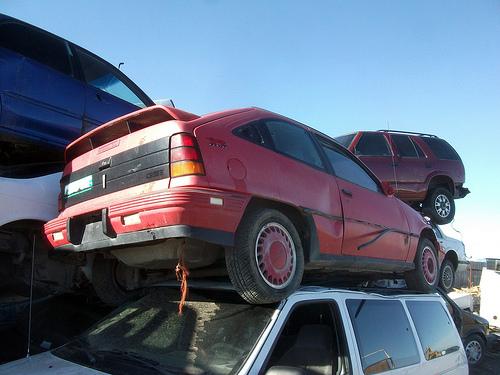세단의 유래는 아래와 같습니다.
Origin[edit]
The word sedan is possibly derived from a southern Italian dialect derivative of Italian sedia "chair" (the first sedan was said to have been introduced from Naples). However, Portuguese and Spanish navigators and colonists encountered litters of various sorts in India, Japan, Mexico, and Peru. They were imported into Spain in the late sixteenth century. Soon the fashion spread into France and then England. All the names for these derived from the root "sed-" from the Latin "sella" - the traditional name for a carried chair.[4]
The first automobile to use the configuration was the 1899 Renault Voiturette Type B. The first closed car, for at least 4 persons, which used the word sedan was the 1911 Speedwell sedan, which was manufactured by the Speedwell Motor Co in Dayton, Ohio.[5] But even before that time completely closed cars were called saloons or limousines, like the 1905 Rational 4-door limousine[6] or the 1907 Renault 4-door limousine[7] or the 1910 Stella 2-door saloon.[8] The words saloon or limousine do not exclusively mean a fully closed car.[9] Cars which are called sedans are almost always fully closed. The term "convertible sedan" was used in the 1930s to describe a car with a soft, foldable top and roll-up windows, very much like a convertible coupe.
The derivation from the town of Sedan, Ardennes in France, where it was said to have been made or first used, lacks historical evidence, according to Oxford English Dictionary.
'세단'은 의자를 칭하는 이탈리아 남부 방언 'sedia'로부터 유래되었다고 추측된다. (중략) 세단은 기마(?)(들고 나르는 의자면 가마..?)라는 뜻의 라틴어 어원 'sella'로(영문 sed-)부터 유래되었다고 한다.
세계 최초로 자동차에 세단이라는 칭호를 붙인 차는 1911년 Speedwell sedan(미국 오하이오주 생산)으로, 4인 이상이 탈 수 있는 지붕이 닫힌 차를 칭한다. saloon과 limousine이 더 일찍부터 사용되긴 했지만 지붕이 완전히 닫히는 자동차가 아니어도 사용되었고, 지붕이 완전히 닫히는 자동차에는 saloon과 limousine보다 sedan이 많이 사용되었다.
아반떼 해치백 같은 경우는 아래에 해당됩니다.
Hatchback (a.k.a. liftback) sedans typically have the fastback profile, but instead of a trunk lid, the entire back of the vehicle lifts up (using a liftgate or hatch). A vehicle with four passenger doors and a liftgate at the rear can be called a four-door hatchback, four-door hatchback sedan, or five-door sedan. An example of such is the Chevrolet Malibu Maxx and Audi A5 Sportback. There can also be two-door hatchback sedans (three-door sedans), by the same technical explanation for two-door sedans. Examples of this design are the Volkswagen Golf, and Chevrolet Chevette.
해치백 세단 혹은 리프트백 세단은 주로 패스트백의 형태를 가졌지만 트렁크리드 대신 리프트게이트나 해치를 통해 차 뒷부분의 전체가 열린다. 도어 4개와 뒤쪽 리프트게이트가 달린 자동차는 4도어 해치백, 4도어 해치백 세단, 혹은 5도어 세단이라 부를 수 있다.
또한 요기 아래를 보시면...
International terminology[edit]
In American English and American Spanish, the term sedan is used (accented as "sedán" in Spanish). The engine compartment, at the front, is covered by the hood; the cargo compartment at the rear is called the trunk.
In British English, a car of this configuration is called a saloon. The engine compartment cover is the bonnet, the cargo-compartment boot is at the rear. Hatchback sedans are known simply as hatchbacks (not hatchback saloons); long-wheelbase luxury saloons may be referred to as limousines.
The British English term saloon is sometimes used by British car manufacturers in the United States. For example, the Rolls-Royce Park Ward was sold as a saloon in the United States, while the smaller Silver Seraph was called a sedan.
In Australia the American term sedan is used, albeit with the British terms boot and bonnet being retained. In New Zealand the British terms "boot", "bonnet" and "windscreen" are most commonly used, but the American terms are understood by most of the population. However, the American terms "sedan" and "station wagon" are predominantly used, with "saloon" only finding occasional usage, particularly in the field of motor racing. In other languages, sedans are known as berline (French), berlina (European Spanish, European Portuguese, Romanian, and Italian); although these terms also may include hatchbacks. These terms, besides sedan, derive from types of horse-drawn carriages. In German, the term Limousine is used for sedans, and "Stretch-Limousine" for limousines.
거의 끝에.. 다른 언어에서 세단은 berline, berlina로 불리우는데 이는 해치백을 포함하는 경우도 있다. 라고 나와있습니다~
답 나왔으면 siasia *_*
